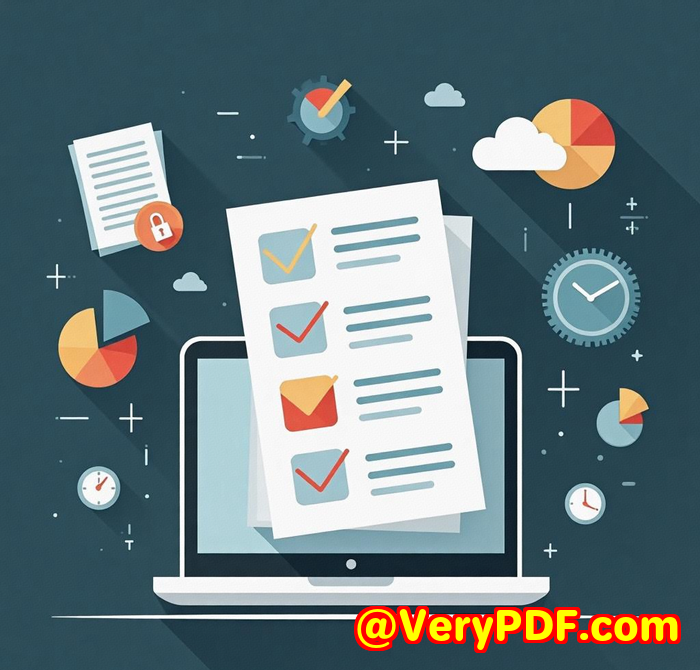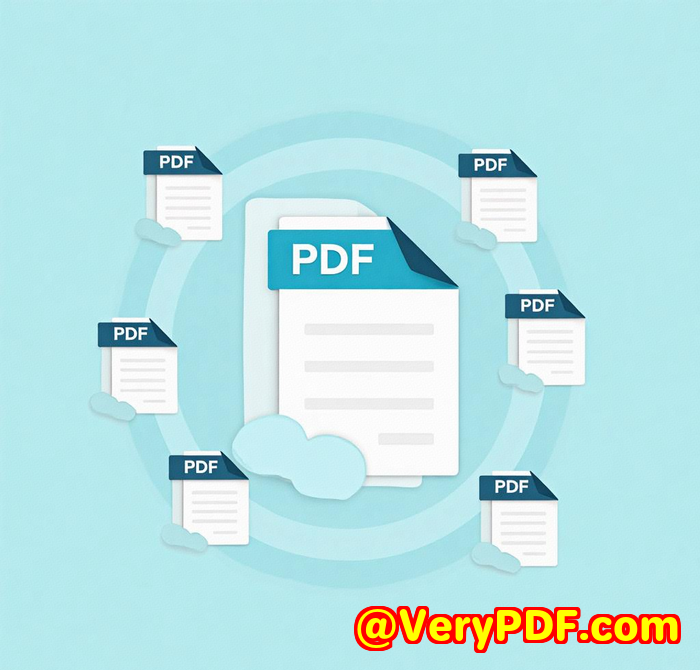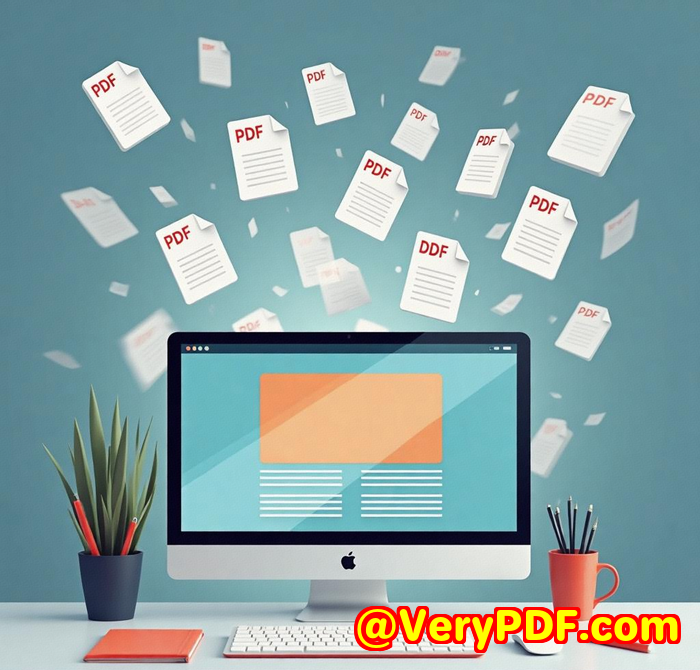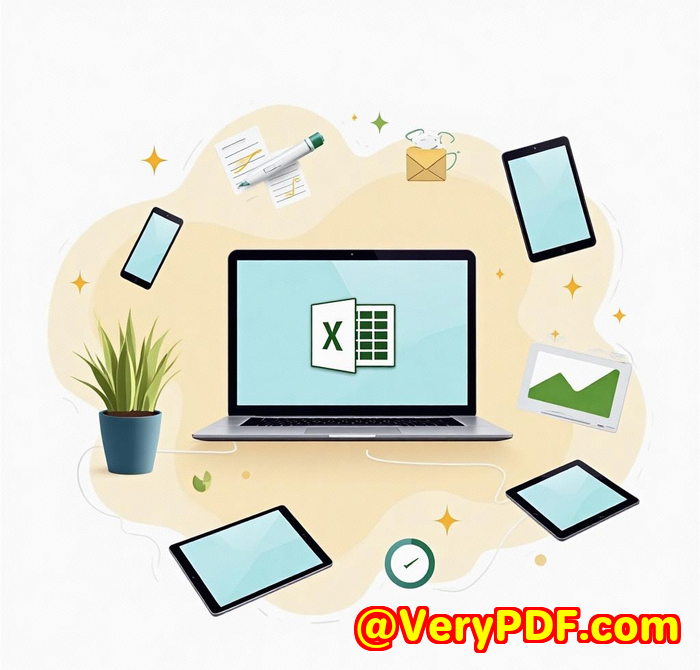How VeryPDF Rasterize API Can Help You Meet Data Protection Regulations in the EU
How VeryPDF Rasterize API Can Help You Meet Data Protection Regulations in the EU
Every time I've had to manage sensitive PDF documents, especially those packed with confidential info, there's always this lingering worry: How do I keep these files secure and compliant with strict data protection laws like GDPR? For those working with legal contracts, financial reports, or healthcare records in the EU, this is a daily headache. Simply sharing PDFs isn't enough anymorethese files need to be locked down, tamper-proof, and consistent in how they look across all devices.

That's where the VeryPDF Rasterize PDF API for Developers comes in. I stumbled upon this tool while hunting for a way to automate secure PDF processing that ticks all the boxes for data protection without breaking my workflow or requiring endless manual steps. And let me tell you, it's been a game-changer.
What is the VeryPDF Rasterize PDF API and Who Is It For?
The Rasterize PDF API is part of the broader VeryPDF Cloud API suite designed for developers who want to integrate powerful PDF tools into their own apps or services without fuss. If you're a developer working in industries where document security and regulatory compliance are criticalthink legal teams, financial institutions, healthcare providers, or even government agenciesthis API was built with you in mind.
At its core, the API converts standard vector-based PDFs into rasterised, image-like PDFs. This means the text and graphics get flattened into a single-layer image, making it virtually impossible for someone to extract or edit the content. In a world where data breaches and unauthorized edits can cost millions, this feature is a massive win.
Why Rasterize PDFs? Understanding the Core Benefits
I always ask myself: Why bother turning a PDF into an image? The answer lies in security and consistency.
-
Protects Content From Edits: Rasterising essentially "locks" the document by converting it into a picture. Unlike editable PDFs, this prevents anyone from copying text, changing figures, or manipulating sensitive info.
-
Ensures Uniform Viewing: Vector PDFs can render differently on various platforms or devices, sometimes messing up layouts or fonts. Rasterising guarantees the document looks the same everywhere, which is crucial for official documents.
-
Compliance with EU Data Laws: GDPR demands strict control over personal data. By using rasterised PDFs, organisations can minimise risks linked to accidental data leaks through editable content.
My Experience Using VeryPDF Rasterize PDF API
When I first integrated the VeryPDF Rasterize API, I was looking to secure a batch of scanned contracts before sharing them with external partners. Previously, I'd tried locking PDFs with password protection, but I kept running into issuespasswords could be cracked, or recipients found ways to bypass restrictions.
The Rasterize API's approach blew me away. Here's how it worked for me:
-
Fast Processing: Uploading a folder of 100+ contracts was a breeze. The API processed and converted every file into a raster PDF within seconds.
-
Customisable Output: I tweaked the image resolution (DPI) and image quality to strike a perfect balance between clarity and file sizehigh enough for readability but small enough for emailing.
-
Seamless Integration: Using REST API calls, I embedded the conversion step directly into our document workflow system without disrupting day-to-day operations.
What really stood out was the accuracy. The converted PDFs looked pixel-perfectno weird font substitutions or layout shiftsand I could finally hand off documents knowing they were both secure and visually consistent.
Key Features That Make VeryPDF Rasterize API a Standout
-
Lightning-Fast Conversions: The API utilises VeryPDF's cloud infrastructure to turn around files in seconds, saving me hours compared to manual processing or slow desktop apps.
-
Enterprise-Grade Security: It complies with ISO 27001, HIPAA, SOC 2, and GDPR standards, so I never worried about sensitive data leaking during conversion.
-
Customisation Options: Beyond basic rasterisation, you can set image resolution, width, and quality, plus handle password-protected PDFs.
-
Developer-Friendly SDKs & Documentation: If you're not a developer yourself, this might sound daunting. But the API's clear docs made integration surprisingly smooth.
-
Global Infrastructure: Servers spread worldwide ensure low latency, so no matter where your users are, processing stays speedy.
How It Compares to Other PDF Tools
I've tried other PDF locking and flattening tools, but many fell short when it came to:
-
Maintaining document appearance across devices
-
Fully preventing text extraction or edits
-
Handling large batch jobs without crashing or slowing down
The VeryPDF Rasterize API checks all these boxes and adds robust security compliance, which others often miss or only offer as pricey add-ons.
Practical Use Cases for the Rasterize PDF API
This tool isn't just for legal contracts. Here's where I've seen it shine:
-
Healthcare: Protecting patient records by ensuring PDFs can't be tampered with or copied.
-
Financial Services: Locking down bank statements or audit reports for regulatory reviews.
-
Government: Publishing official documents with fixed layouts that citizens can view but not modify.
-
Publishing: Distributing proofs or manuscripts in read-only format.
-
Any organisation needing GDPR compliance: Lock down sensitive info in PDF form effortlessly.
Why I'd Recommend VeryPDF Rasterize PDF API to Anyone Handling Sensitive PDFs
If you deal with sensitive or regulated data, this tool will seriously lighten your load.
-
It saves hours by automating secure PDF conversions.
-
It prevents accidental or malicious edits.
-
It keeps your documents visually consistent and compliant.
-
It's simple to set up even if you're not a hardcore developer.
If you want peace of mind and a solid defence against data breaches through PDF files, I'd say this API deserves a place in your toolkit.
Start your free trial now and see how it can boost your productivity and protect your documents: https://www.verypdf.com/online/cloud-api/
Custom Development Services by VeryPDF
VeryPDF doesn't just stop at APIs. They offer custom development tailored to your technical needs across multiple platforms including Linux, macOS, Windows, and mobile environments.
If you need:
-
Custom PDF utilities built with Python, PHP, C/C++, or .NET.
-
Windows Virtual Printer Drivers to create PDFs or images from print jobs.
-
Printer job capture and monitoring tools.
-
Document format analysis (PDF, PCL, PRN, Postscript).
-
Barcode recognition, OCR, or advanced layout analysis.
-
Cloud-based document conversion, viewing, or digital signatures.
-
PDF security features, DRM protection, and digital signing tech.
VeryPDF can build it for you. Their expertise extends across APIs, SDKs, and complex workflows designed to fit your organisation's exact requirements. Reach out via their support centre at http://support.verypdf.com/ to start the conversation.
FAQs
Q1: Can the VeryPDF Rasterize PDF API handle password-protected PDFs?
A1: Yes, it supports opening password-protected PDFs by specifying the password during conversion, allowing secure processing of encrypted files.
Q2: How does rasterising a PDF help with GDPR compliance?
A2: Rasterising turns editable content into a flat image, preventing data extraction or edits, thus reducing the risk of data leaks and ensuring compliance with strict data protection laws.
Q3: What customization options are available for the rasterized output?
A3: You can adjust image resolution (DPI), image width, and image quality to balance file size with clarity depending on your needs.
Q4: Is this API suitable for batch processing large volumes of PDFs?
A4: Absolutely. The cloud infrastructure supports fast, automated batch processing, making it efficient for organisations handling thousands of files.
Q5: What platforms can integrate with VeryPDF Rasterize PDF API?
A5: The API uses REST calls, so it can integrate with virtually any platform or programming language capable of HTTP requests, including web, desktop, and mobile apps.
Tags / Keywords
-
VeryPDF Rasterize PDF API
-
PDF security GDPR compliance
-
Automate PDF conversion
-
Rasterize vector PDF
-
Secure PDF processing EU
This API doesn't just make your PDFs look goodit makes them secure and compliant, saving time and stress while keeping you ahead of regulatory demands. Give it a try and see the difference for yourself.



